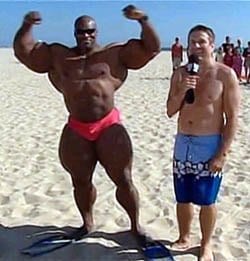Bodybuilding vs. Aesthetics
Take a look at the following physiques.


Do they inspire you? Do you want to become just like them? With all due respect to Markus Rühl and Jay Cutler, most people, even those that go to the gym, are repulsed by them. They may be big and lean, but they’re unattractive, unaesthetic as bodybuilders and artists call it.
Before we go over what separates a grotesque behemoth from aesthetic eye candy, let’s first define the terms we’re dealing with here.
The Definition of Bodybuilding
The manager at my previous gym told me, “We’re OK with guys using big weights and we have some really big guys in here, but we do not tolerate bodybuilding. Most of our members just want to lose fat and build some muscle or get toned.” That’s just a play of words, semantic nonsense. It’s akin to saying, ‘Yeah, I play basketball, but I’m not a basketball player.’ You know what the difference between a professional bodybuilder and a guy looking to get ‘toned’ is? The bodybuilder is more successful. Both go to the gym to build muscle and lose fat and that is the very essence of bodybuilding: maximize muscle; minimize fat. There are other factors of course, like symmetry and proportions, but building muscle is the foundation. Bodybuilding is no more than recompositioning your body.
If you lift weights to improve the way you look, you are a bodybuilder. You may not be a professional or competitive bodybuilder, but you are a bodybuilder. The only reason people don’t call themselves bodybuilders is the social stigma. They don’t want to be associated with guys giving up their social lives to work at their physiques, with whole body shaving and tanning, with steroids, with publicly posing in thongs, with these narcissistic monsters. That’s fine, but it doesn’t change the fact they’re doing what you do, just so much more successfully that other people travel to shows just to watch them.
This social pressure not to be a bodybuilder is so deeply internalized by most people that they follow training programs designed for purposes other than their own. Anything not to show you’re training just to build muscle. They’re not bodybuilding, they’re training to get ‘fit’, ‘toned’ or ‘athletic’. I’ve also seen countless guys adopt more strength oriented programs for this reason. Bodybuilding isn’t cool. There needs to be something else. Athletics, fitness, function, strength, endurance, power… At least the latter 3 are quantifiable. What do fitness, athleticism and function even mean if you’re not an athlete? I love reading about people advocating the deadlift because it carries over well to everyday life. Pick up a lot of 300 pound grocery bags, do you? I’m definitely not saying these are invalid reasons to train, but you need to be real with yourself. Would you train if training had no effect on the way you looked? Would you trade 10 pounds of muscle to improve your blood pressure? Would you willingly get fat to be better at sports you’re not competing in?
Aesthetics
Assuming you are in fact training to improve your physique, there is still the question of what you think is a good physique. As the cliché goes, beauty is in the eye of the beholder.
The psychophysical Range Frequency Theory [1] explains how we perceive a physique. Essentially, in our mind we rank the physique against the physiques in our frame of reference. Your frame of reference consists of the people in your gym, the people you see on TV, everyone that easily comes to mind. The person that most easily comes to mind is usually yourself and most people associate themselves with like-minded people. Therefore, the single best predictor of the degree of muscularity you prefer is your current level of muscle mass. As the saying goes, perfection is a moving target.
Many people start out scrawny and think fashion models and endurance athletes have the best bodies imaginable. Anyone with a lean stomach and some chest muscle is considered perfect.
 Brad Pitt in Fight Club is widely considered to represent physical perfection by untrained men.
Brad Pitt in Fight Club is widely considered to represent physical perfection by untrained men.
If they make it past the beginner stages and start to train more than the mirror muscles (chest, abs, biceps), they gradually begin to like physiques with defined muscles.
 The 300 shredded Spartans embodied masculinity for intermediate trainees around the world.
The 300 shredded Spartans embodied masculinity for intermediate trainees around the world.
When they become that size themselves, albeit usually less lean, they often start liking strength athletes, fitness models and natural bodybuilders. Notable exceptions are certain genetically blessed individuals, who see muscle gain as a normal result of screwing around in the gym and consequently do not see muscular guys as extraordinary. A typical identifier of these people is that they stopped training a muscle group or exercise because it was too successful, like squatting to build the legs.
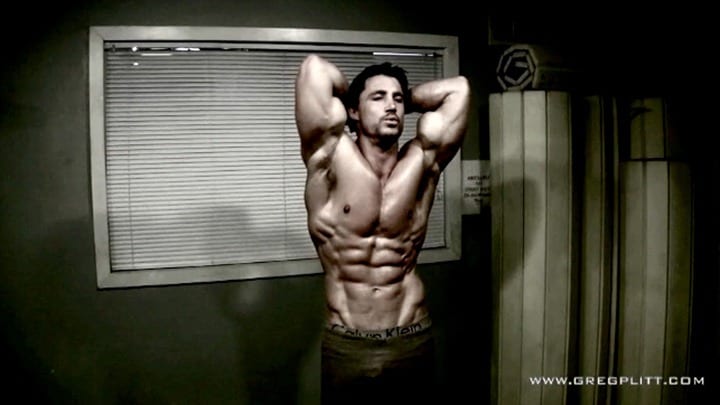
Greg Plitt’s body was used to model the perfect Dr. Manhattan in Watchmen.
In short, getting bigger changes your frame of reference of what is a normal physique and therefore changes your aesthetic preferences. However, there’s more to aesthetics than muscle mass. Two people with the same level of muscularity can look extremely different. So what makes a physique aesthetic?
Factors that Influence the Look of a Physique
Let’s start with the difference between classical and modern bodybuilders.
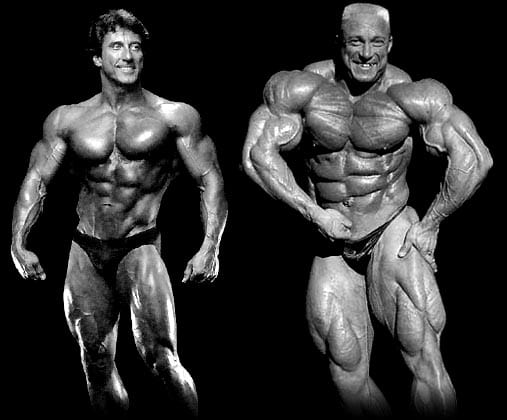
Bodybuilding, then and now.
Most people prefer the looks of the bodybuilders from the so called Golden Age of bodybuilding to the professionals of today. Obviously, Markus Rühl in the above picture is at least 50lb heavier than Frank Zane and the main reason people dislike professional bodybuilders’ physiques is simply that they’re too deviant, but two other factors do come into play. First, most professional bodybuilders just aren’t very handsome. That is to say, it seems there is a negative correlation between facial attractiveness and presence in professional bodybuilding. A pretty face makes a very muscular physique much more tolerable for many people and an ugly face can make any body look bad. Secondly, professional bodybuilders often display unnatural growth in more tissues than just muscle due to the (ab)use of androgenic anabolic steroids and particularly growth hormone. Growth of the hands and facial bones, particularly the jaw, can result. Swollen internal organs can make even the leannest bodybuilders look pregnant and their skin and hair can also be affected. So it’s unsurprising that most people don’t like the ‘growth hormone look’. Synthol, Esiclene, implants and other muscle volumizers further contribute to the unnatural look. Take a look at the pictures below from Flex Wheeler (also showing Lee Priest). Flex used to have, in my opinion, one of the greatest physiques of all time, but the artificial aids took their toll.


For more examples of muscle volumizers, take a look at this site.
Most classical bodybuilders weren’t natural either, but today’s professional bodybuilders have taken it to a whole new level. So to sum up the factors that define current professionals’ physiques, we’re talking about people who have trained hours a week for years, have incredibly rare genetics, are on various steroids for at least half the year and use all sorts of artificial aids. Remember this next time someone asks you if you want to be that big. You never will be, no matter how hard you train or what you inject. People drastically underestimate the size of professional bodybuilders. The picture of Ronnie Coleman below may give you an idea.
What about somewhat less extreme cases, like Frank Zane or Flex Wheeler in the before picture? Most people will never achieve such a physique either, because not only does it take amazing bodybuilding genetics and steroids, every one of these people also had an exceptional anthropometry, that is, bodily proportions. Two of the most influential factors, over which you (normally) have no control, that determine your physique’s appearance are the relative length of your bones and the ratio of your muscle to tendon length.
The relative length of your bones, or your skeletal frame, limits the proportions you can attain. You can make tremendous differences in the ratio of your waist to shoulder circumference, but you will always be limited by the width of your hips and your shoulders. Look at the picture of Steve Reeves below. Most people will never achieve such a V-shape.
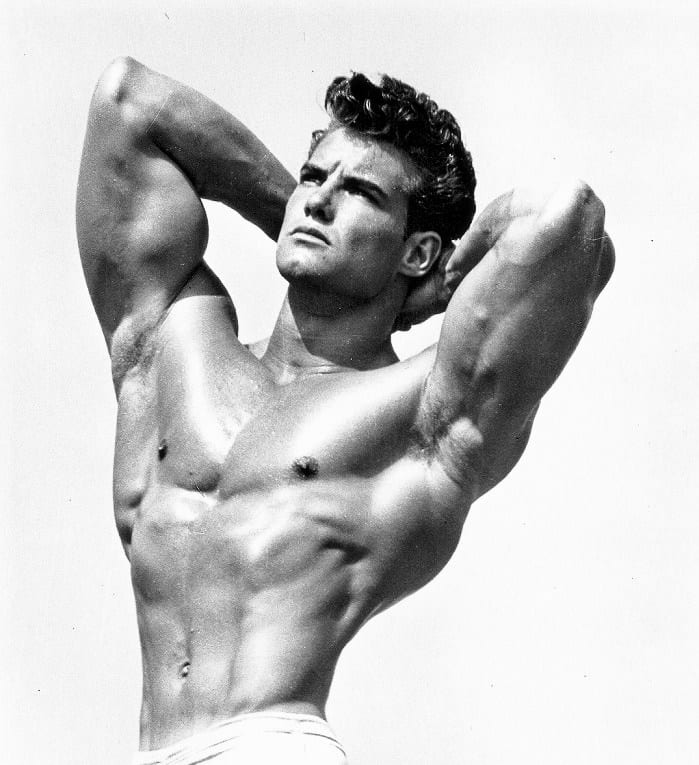
The ratio of your muscle to tendon length contributes significantly to the ‘fullness’ of your physique. If you have short tendons and long muscle bellies, your physique will appear and in fact is fuller and vice versa. Such a ratio makes your physique very curved. Curves create the illusion of something being much larger than it actually is, because your brain mainly perceives differences and relative lengths, not absolutes. Examples of people with very full muscle bellies are Flex Wheeler, shown previously and Phil ‘The Gift’ Heath, shown below.

Also, look at how low the lats of Franco ‘The Bat’ Columbo originate from the back. Some people have lats that start haflway up the spine. The Bat’s lats/wings start almost right above his hips, creating a ridiculous V-shape (W-shape really).

Aside from the length of muscles, their shape also affects their appearance. The muscles where this is most obvious are the abs, the pecs and the biceps.
The biceps is one of the muscles with the highest variability in shape. Even the amount of heads in the muscle, normally 2, has been reported to vary up to 7 heads. Some people have biceps with a large peak and others do not. You can slightly increase your peak by preferentially training the long head of the biceps over the short head, but genetics play a much larger role than training. Look at the biceps of Arnold Schwarzenegger and Dorian Yates below to see the difference in appearance caused by the shape of the biceps.
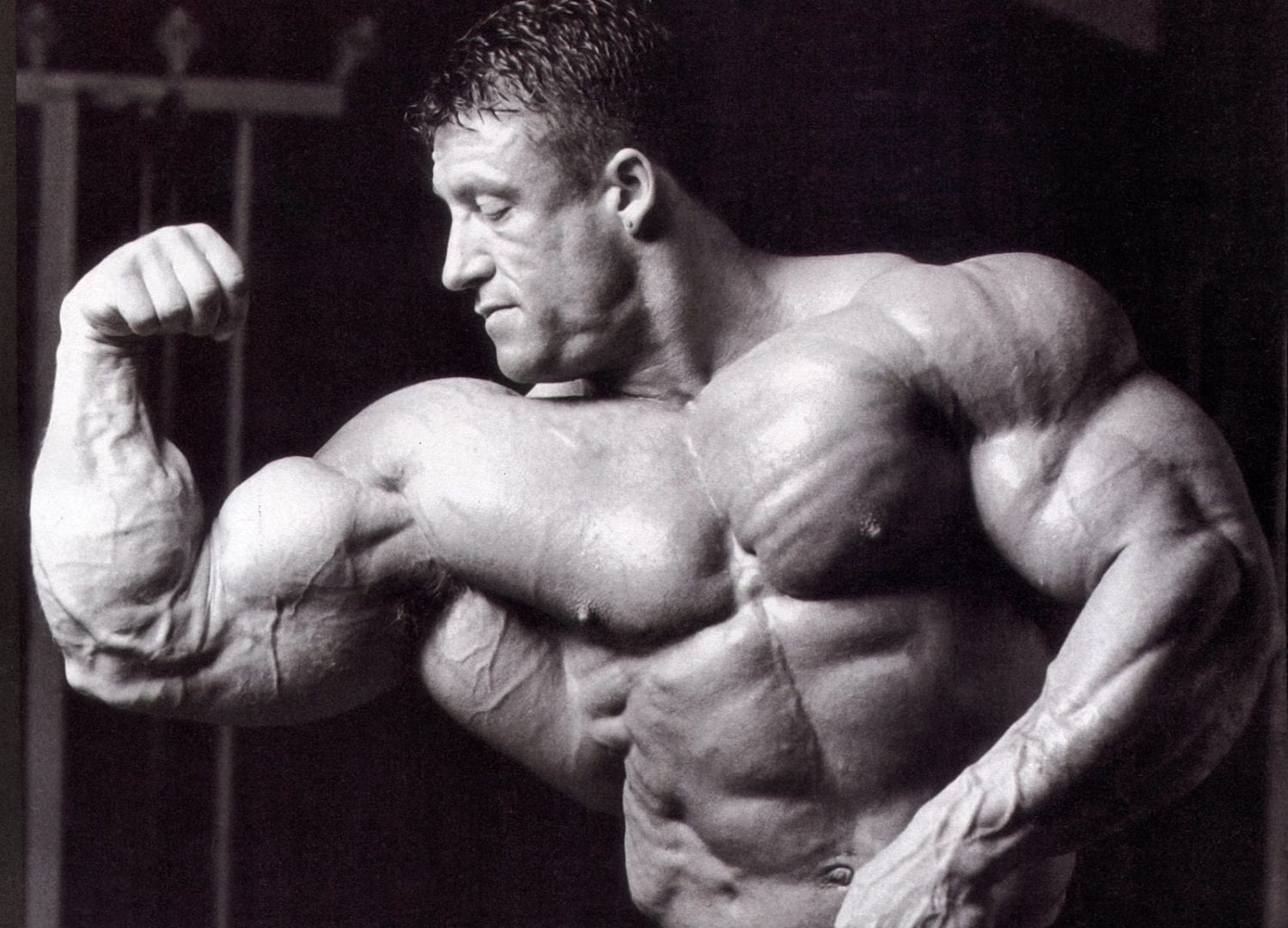

The chest varies much less than the biceps in shape, but it’s such a prominent muscle that small differences make a large impact on the look of a physique. Gynecomastia, or gyno for short, can radically change the shape of the pecs due to swelling of the mammary glands. Its causes are, among other things, supraphysiological levels of estrogen, for example as a result of the use of androgenic steroids, and genetics. A considerable amount of people have some degree of gyno. See the picture below for a comparison of pre- and post-surgery to remove the breast tissue.

The abdominals also greatly vary in shape. Some if not most people’s abs are not perfectly symmetrical. Some people can get an 8-pack, but most can’t. There’s nothing you can do to change the shape of your abs by training, despite what many advertisements claim. The image below demonstrates the difference in abdominal shape between Tom Venuto and… some guy.


Also compare Tom Venuto’s chest to that of Mike Mentzer. (How that man never won an Olympia is beyond me.)

In sum, there are many genetic factors that contribute to your physical appearance besides muscle mass and fat. This may sound depressing, but there are some general lessons to be learned from all this information.
Take Home Messages
- Define your goals concretely and be honest. It’s more effective to train one quality at a time than to try to be good at everything.
- If you are training for aesthetics, mass or to generally look good, you are a bodybuilder and you should train like one. Muscle mass is muscle mass. It doesn’t matter if you want to look like Brad Pitt or Ronnie Coleman: until you reach that goal, the training focus is the same. Maximize muscle; minimize fat.
- Be aware that your aesthetic preferences can change over time. A goal of being 220lb at 10% body fat is completely arbitrary, as is trying to match your anthropometry to certain nonsense proportions, such as the Golden Rule. Long term goals may work for some, but in the short term the goal is always just to progress.
- Muscle mass and body fat percentage are basically the only things you can control about your physique’s appearance. You have less control over proportions and symmetry and if you are maziming whole body hypertrophy using a balanced program, those things tend to take care of themselves. Don’t worry about your biceps peak or the shape of your abs, just train for a bigger biceps and less fat. Genetics are given. You can’t change them, so don’t worry about them.
References
- Blanchflower et al. (2010). Imitative Obesity and Relative Utility. Journal of the European Economic Association Volume 7, Issue 2-3, pages 528-538, April-May 2009
- Livio, M. (2002). The Golden Ratio: The Story of Phi, The World’s Most Astonishing Number. NY, New York: Broadway Books.
- Poudel, P. P. & Bhattarai, C. (2009). Study on the supernumerary heads of biceps brachii muscle in Nepalese. Nepal Med Coll J, 11(2): 96-98.
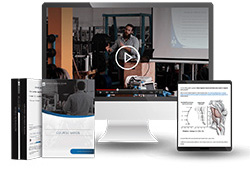 Want more content like this?
Want more content like this?
Then get our free mini-course on muscle building, fat loss and strength.
By filling in your details you consent with our privacy policy and the way we handle your personal data.
